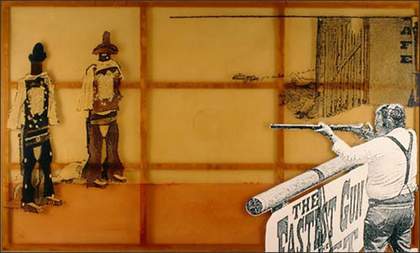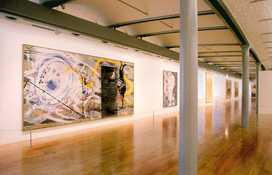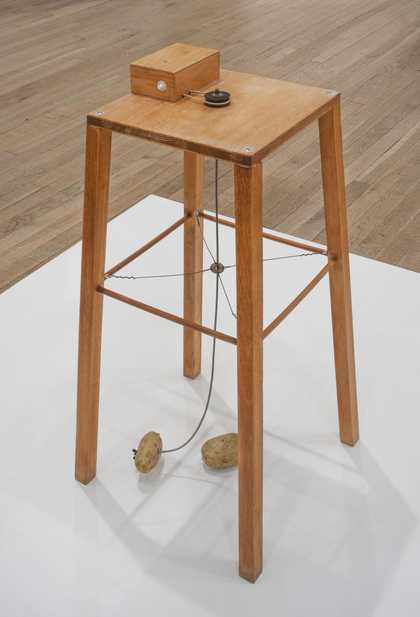
Sigmar Polke Fastest Gun in the West
Sigmar Polke: History of Everything showcases Polke’s work over the last six years. The exhibition was initiated by the Dallas Museum of Art, and organised in close collaboration with the artist. Polke made several new works in response to the original Dallas venue, such as paintings of shooting arcades and gun sellers which refer to the renowned gun culture of the American West. Other works make references to the role of America in global politics, perhaps reflecting that the current leader of the world’s dominant superpower, George Bush, is himself from Texas. Notions of perception and the authenticity of images, and the boundaries between abstraction and figuration are also explored throughout the exhibition.
The presentation at Tate Modern also includes a significant number of works made specifically for London. These range from new examples of his ‘Machine Painting’ technique, to recent paintings using imagery from newspapers and magazines. Polke’s characteristically ironic sense of humour is evident in two large paintings that show images of nudist colonies, where naked men and women cavort in the countryside. These works seem to be a witty reflection upon Britain’s ambivalent attitude to sex.
Sigmar Polke: History of Everything offers the first chance to see a major new body of work by this internationally renowned artist.
It is possible to see more of Sigmar Polke’s work on level 3 at Tate Modern where three galleries have been devoted to showing drawings, paintings and photographic works from the early 1960s to the 1980s. This display includes generous loans from the Froehlich Foundation, Stuttgart, with which Tate has a special relationship.




